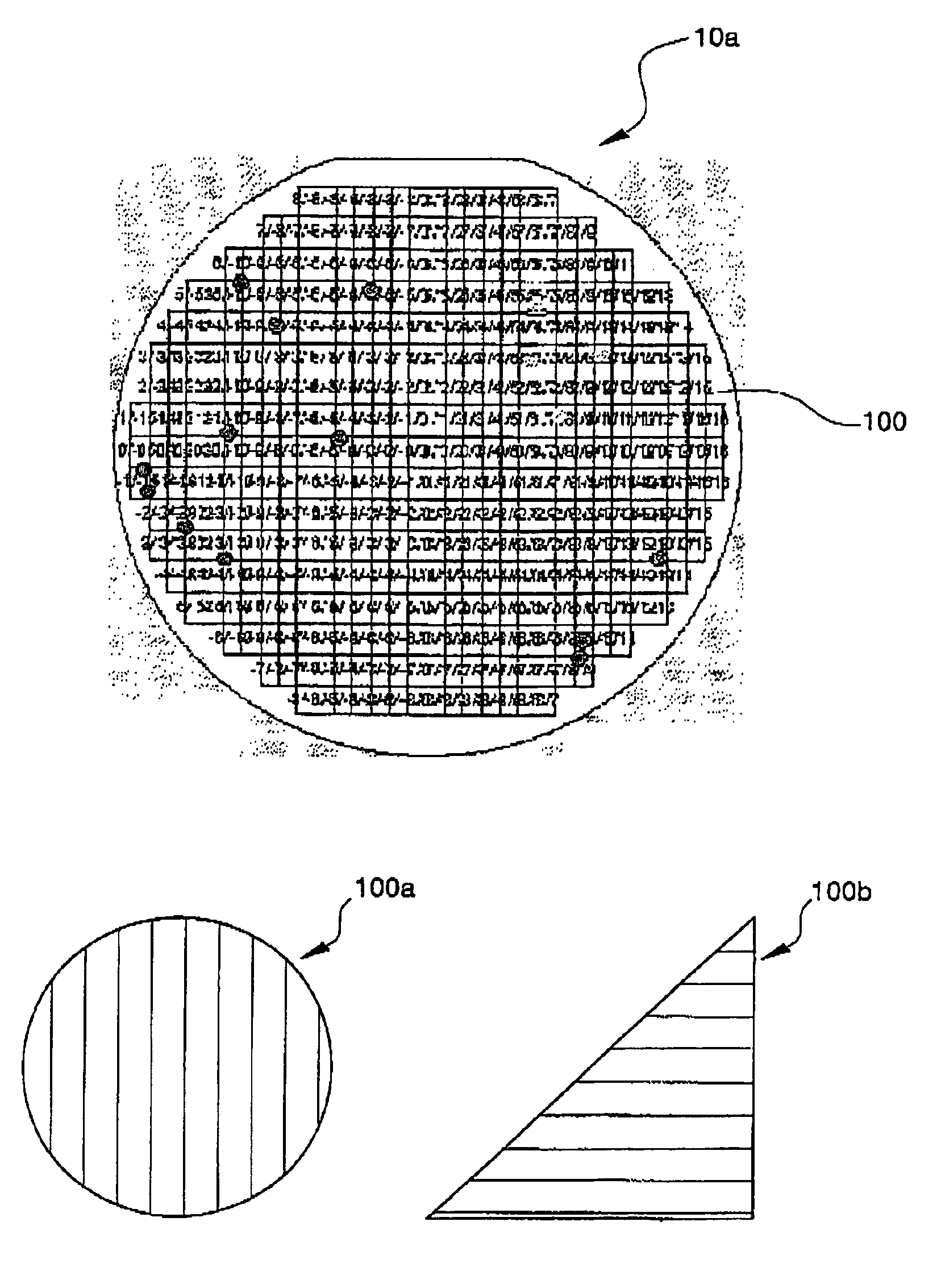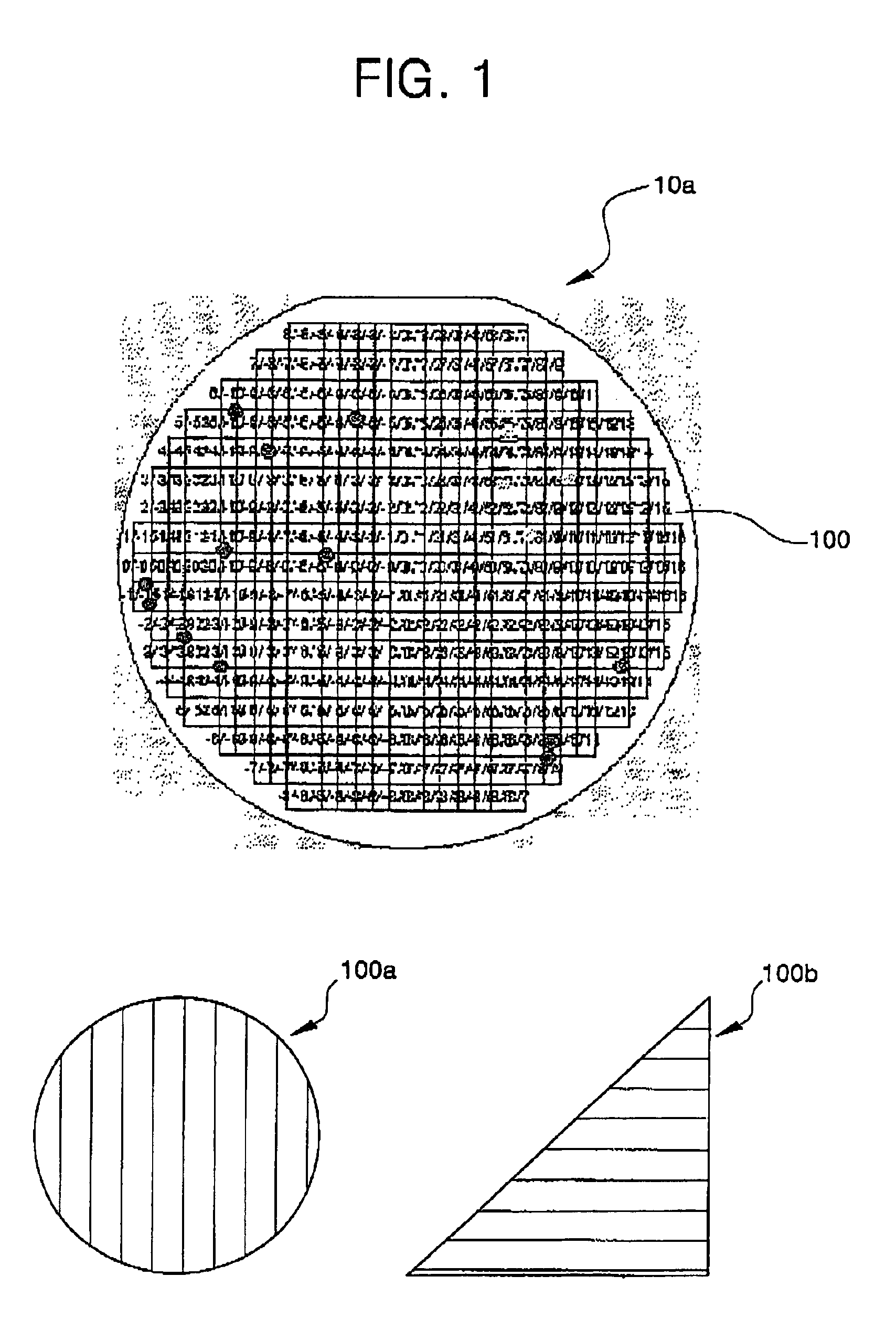Method of identifying and analyzing semiconductor chip defects
a technology of semiconductor chips and defects, applied in the field of identifying and analyzing semiconductor chip defects, can solve problems such as difficulty in understanding the defect data obtained by the drt instrument, complex defect data obtained using these instruments, and problems such as difficulty in identifying chip defect causes based on defect composition, etc., to achieve the effect of being easily analyzed
- Summary
- Abstract
- Description
- Claims
- Application Information
AI Technical Summary
Benefits of technology
Problems solved by technology
Method used
Image
Examples
Embodiment Construction
[0027]Various preferred embodiments of the present invention will now be described in further detail. Referring to FIG. 1, a wafer defect map 10a, according to one aspect of the present invention, identifies the location of defects on the wafer using markings 100. In the wafer defect map of FIG. 1, like markings are used to represent defects of the same type. FIG. 2 is a bar graph illustrating a process of classifying the defects according to another aspect of the present invention.
[0028]Referring to FIGS. 1 and 2, a method of identifying and analyzing defects in semiconductor chips, according to a preferred aspect of this invention, will be described. One or more semiconductor defect inspection instruments are first used to identify the location and type of defects on a wafer. A Defect Review Tool (DRT), such as the KLA SEM, can be used for this purpose. After the defects have been located, the same defect inspection instrument, or a different inspection instrument, is used to dete...
PUM
 Login to View More
Login to View More Abstract
Description
Claims
Application Information
 Login to View More
Login to View More - R&D
- Intellectual Property
- Life Sciences
- Materials
- Tech Scout
- Unparalleled Data Quality
- Higher Quality Content
- 60% Fewer Hallucinations
Browse by: Latest US Patents, China's latest patents, Technical Efficacy Thesaurus, Application Domain, Technology Topic, Popular Technical Reports.
© 2025 PatSnap. All rights reserved.Legal|Privacy policy|Modern Slavery Act Transparency Statement|Sitemap|About US| Contact US: help@patsnap.com



